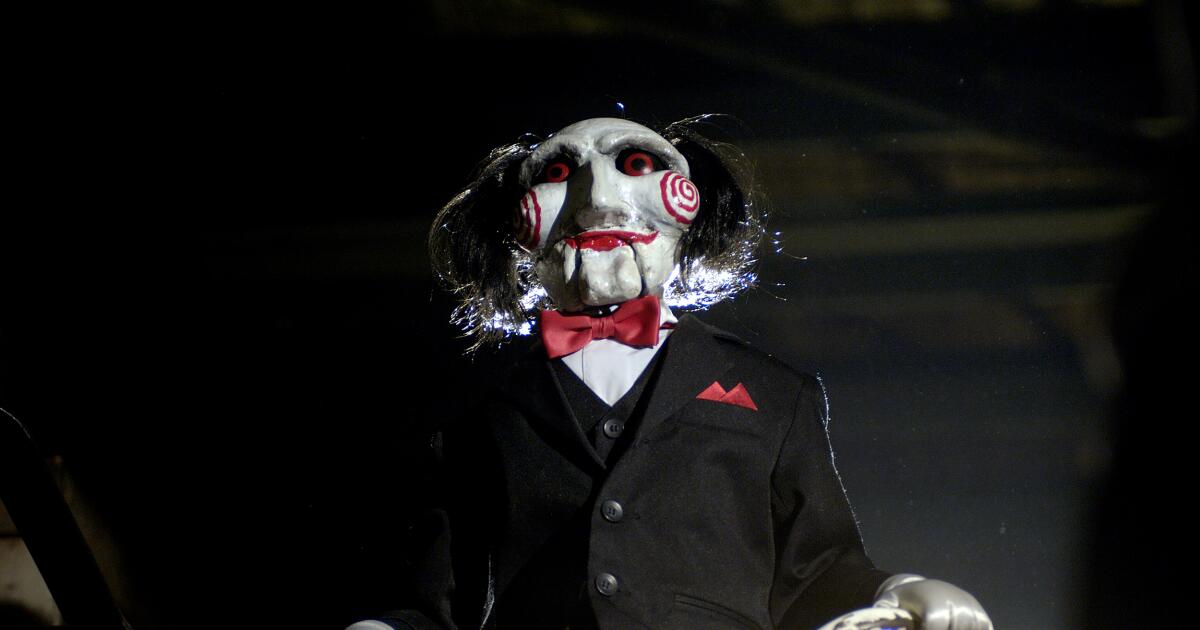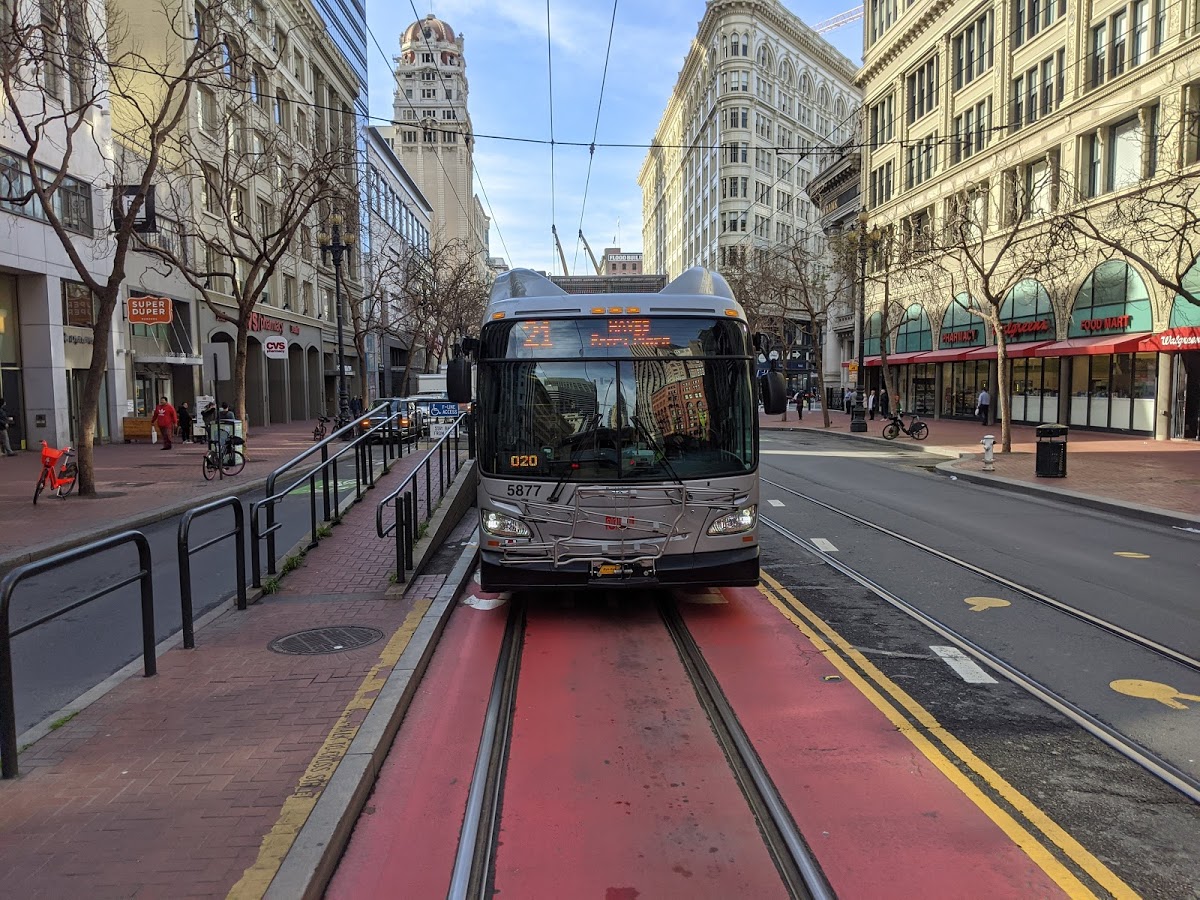Business
Aspen for Cheapskates

Over an $8.50 pint of craft beer from Aspen Brewing Company, which is comparable to what I pay at home in Chicago, I realized that Aspen, Colo., is not expensive by big-city standards. It’s expensive by small-town standards.
The Economic Research Institute, which compiles financial data for public and private organizations, pegs the cost of living in Aspen at 51 percent higher than the average in the United States, a little less than a city like Seattle.
As a professionally penny-pinching traveler, I try to avoid paying urban prices in the mountains. In the summer in Aspen, apart from my weakness for microbrews, I didn’t have to.
For those who don’t care to shop for Prada or Gucci clothing, or don’t maintain elaborate second mansions here, Aspen’s essential appeal lies in the outdoors — mountains, wildlife, rivers — which, compared with winter, when you might need to rent ski equipment or pay for mountain access, is a steal. Hiking and city bus transportation are free. Cycling, if you can avoid expensive rentals, is a bargain. Parks beckon picnickers, and free cultural attractions abound.
Over the course of three days in Aspen, I spent about $600 before airfare, with most of that on lodging. Here’s how I cheaped out in a resort town synonymous with wealth.
Extra beds and free wheels
An annual winter visitor to Aspen, I touched down in July, astonished at how dramatic the mountains looked without fluffy layers of snow to soften their jagged edges.
From the Aspen/Pitkin County Airport, nearly four miles from downtown, the Roaring Fork Transportation Authority buses are free to and around town, saving more than $20 on a taxi and delivering the moral satisfaction of speeding by bumper-to-bumper traffic in a bus-only lane.
Within 10 minutes, I reached town and walked a few blocks to my Main Street accommodations at the Tyrolean Lodge, a relatively affordable, family-run hotel decorated in vintage ski gear and backcountry photos that the local Aspen Times once called “a dying breed in Aspen.”
“There used to be small lodges all over Aspen owned by families and not corporations,” said Pierre Wille, the general manager, whose family has owned the Tyrolean since 1970.
Fifteen of its 16 rooms accommodate five people in three beds, and all have efficiency kitchens with free coffee to help guests economize on meals. I paid $267 a night including taxes and fees, which, for budget travelers, is expensive for one person, but a find for families and groups, potentially knocking the price down to $53 a night per person. By comparison, rates at the luxury Hotel Jerome were running $1,275 a night. Even the more modest Limelight Hotel Aspen was charging over $700 a night.
“We’re interested in keeping Aspen affordable,” Mr. Wille said. “A ski bum can still sort of make it.”
A summer bum, I was relieved to find the lodge offered free bikes. The fleet of eight hand-me-downs solidly beat the offerings at local shops, which mostly rent only electric bikes, charging $130 a day for e-bike rentals.
I pedaled my single-speed cruiser to the nearby Rio Grande Trail, which runs down the valley following the Roaring Fork River from Aspen 42 miles to Glenwood Springs. I breezed as far as Woody Creek, about eight miles, before turning around for the uphill return, consoling myself with extended wildflower-viewing time as other cyclists whizzed past on e-bikes.
Bus to the wilds
As skiing is to winter, hiking is to summer. Several trails take off from town, and anyone who hikes up Aspen Mountain can take the gondola back down free.
Among the stars of the Elk Mountains that surround Aspen are the “14ers,” or 14,000-foot-plus peaks, including Maroon Peak and North Maroon Peak, collectively known as the Maroon Bells, about 10 miles west of town.
One look at the majestic pyramidal pair reflected in Maroon Lake at the base of the Maroon Bells Scenic Area explains why more than 300,000 visitors come here each year. To quell traffic between May and October, RFTA runs a bus ($16 by reservation) to the area from Aspen Highlands, one of the four ski mountains that make up Aspen Snowmass (a free RFTA bus travels between town and Aspen Highlands).
I booked the day’s first lightly trafficked shuttle at 7 a.m. on a chilly, bright morning and hit the trail to Crater Lake, 3.6 miles round-trip, for closer mountain views. Stands of aspen gave way to alpine meadows blooming with wild columbine and aspen sunflowers. The trail bisected one rock pile occupied by a family of pika, pudgy rabbit relatives who vocalized like squeaky toys.
By 9 a.m., as I descended back to the bus base, a steady stream of hikers were making their way up the trail with cellphone cameras pointed lakeside at a family of moose.
Adjusting to happy hour
While the outdoors are free, the indoors — namely restaurants and bars — require strategy.
“With happy hours, you’re golden,” advised my famously thrifty brother-in-law Chuck Leavitt, who lives near Aspen, noting the happy-hour deals that many restaurants offer during off-peak hours.
There are few locations better than Ajax Tavern, with a sprawling outdoor patio at the foot of Aspen Mountain. Its happy-hour deals slash margaritas from a nosebleed $19 to a reasonable $8. But the signature truffle fries, undiscounted, cost $21, and food specials like arancini at $15 weren’t enough for dinner.
Besides limited menus, the problem with happy hours is adjusting to dining between the early-bird hours of 3 and 6 p.m., which I managed the next day at Mezzaluna. A veggie pizza ($14) from its happy-hour menu provided ample leftovers for breakfast.
Lunches, thankfully, were easier. A sizable slice of pepperoni pizza at New York Pizza set me back $6.25. Red Fox Frozen Yogurt offers self-serve by the ounce (75 cents) so I limited myself to a $2 cup. My friend Tess Weaver, a writer who lives in nearby Basalt, suggested we meet at the Big Wrap for lunch, where her chicken pesto and my chicken Caesar — both as generous as the business name implies — cost $11 each.
“Most of my dates with friends are hikes, bike rides or river activities,” she said, as we sat at a public table on shady Cooper Avenue and discussed spots to stage B.Y.O. après-sport picnics. “You meet people to do free things.”
Cultural freebies
One considerable trickle-down benefit to the largess for which Aspen is famed is that most of its major cultural attractions are free, including the Aspen Art Museum. A few blocks from the ski hill, I toured exhibitions by the Iranian artist Nairy Baghramian and paintings by the German artist Florian Krewer before reaching the tranquil Rooftop Café, where a pick-me-up cappuccino cost $4.
Aspen’s reputation as a cultural destination began after the Chicago businessman Walter Paepcke visited in the 1940s and envisioned the former mining town as a gathering place for artists, thinkers and leaders, an inspiration that would spawn the nonprofit Aspen Institute and the Aspen Music Festival and School. In 1946, he lured the artist and designer Herbert Bayer, who had studied and taught at the influential Bauhaus in Germany, to Aspen, where Bayer would design everything from Modernist homes to the Aspen leaf logo originally used by the local ski company.
Bayer’s prolific work in textiles, book graphics and more is the subject of the year-old Resnick Center for Herbert Bayer Studies (free). A six-minute bike ride from downtown, the museum borders the 40-acre Aspen Institute grounds, which Bayer also designed. After an hour in the museum, I spent another outside with a free online guide from the Aspen Meadows resort, seeking out marble sculptures, earthworks and a topographic mural by the artist.
Next door, in a giant tent, caterers were preparing for a concert from the Aspen Music Festival, an eight-week summer series devoted to classical music and opera (through Aug. 20). Headlining performances by the opera singer Renée Fleming and other stars start at $75, but the calendar is loaded with free events, often performed by some of the school’s more than 400 students (alumni include the violinist Joshua Bell and the composer Philip Glass).
That evening, I took a bus to the school’s leafy campus about two miles out of town to attend a String Showcase, a free one-hour concert by violin and cello students who performed a range of music, from the French Romantic composer Ernest Chausson to the contemporary Turkish composer Fazil Say.
“The free events are important parts of what we do,” said Laura E. Smith, the festival’s marketing and communications vice president, estimating that roughly 70 percent of its programming is free. “More than a ticket sale, it’s about heart and humans and enriching the world.”
Backcountry day trips: $65
In summer, when mountain roads are free of snow, Aspen is a great base for day trips in the region, including exploring the Continental Divide on 12,095-foot Independence Pass. Extremely fit bicyclists make the roughly 20-mile ascent southeast of Aspen — gaining over 4,000 feet in elevation — but far more drive the twisting, narrow route on a seasonal stretch of Highway 82 that follows the cascading Roaring Fork River.
I hitched a ride with my sister and brother-in-law, who live in nearby Carbondale. Slushy ice still covered a pond ringed in wildflowers on the pass. Working our way back down the road, we parked below the pass to hike to Linkins Lake, a steep 1.2-mile round-trip in the Hunter-Fryingpan Wilderness for a lakeside picnic, and later wandered around the mining ghost town of Independence. At the Grottos, we waded into the icy river at a tumbling section known as the Cascades. We broke out a D.I.Y. happy hour at Devil’s Punchbowl, entertained by jumpers from surrounding cliffs launching themselves into a river pool.
To replicate this day without freeloading, I would need to rent a car (Kayak lists them from $48 a day), pack a picnic (Grateful Deli’s ham, turkey, Cheddar and Swiss, $10.50) and stock up on beer (25-ounce cans of Bud Light were recently priced at two for $6 at City Market grocery in Aspen), a roughly $65 outlay, not including gas. Rocky Mountain high: priceless.
Follow New York Times Travel on Instagram and sign up for our weekly Travel Dispatch newsletter to get expert tips on traveling smarter and inspiration for your next vacation. Dreaming up a future getaway or just armchair traveling? Check out our 52 Places to Go in 2023.

Business
Driverless disruption: Tech titans gird for robotaxi wars with new factory and territories

As three key players vie for dominance, the race to put driverless taxis on roads across the country is heating up.
Waymo, owned by Google’s parent company Alphabet, already offers paid autonomous rides in a handful of cities, including San Francisco and Los Angeles. Amazon’s robotaxi effort, known as Zoox, opened a new production facility in the Bay Area this week. The company has been testing its unique pill-shaped vehicles in California and Nevada since 2023.
Meanwhile, in Austin, Texas, Elon Musk just started testing driverless Teslas with the hopes of launching a commercial service soon. Musk unveiled a prototype for Tesla’s Cybercab late last year, touting his vision for an autonomous future and “an age of abundance.”
The arrival of self-driving tech could eventually affect society as much as the internet and smartphones did years ago, some experts predict. With Waymo leading the way and Tesla and Zoox trying to catch up quickly, a new status quo could be on the horizon, said Karl Brauer, an analyst with iSeeCars.com.
“Tesla has tried to catch up, and Zoox is a more recent competitor that’s hoping to be a serious player,” he said. “Waymo has been slow and steady and, as a result, is winning the race.”
According to some industry insiders, the U.S. is about 15 years from seeing widespread use of robotaxis, Brauer said. While Waymo taxis have become a common sight in the cities where they operate, weather conditions and charging infrastructure still limit their expansion.
On Wednesday, Waymo expanded its service area in Los Angeles County, where its vehicles now roam an area of more than 120 square miles. The company also increased its service area in San Francisco, expanding access to suburbs and Silicon Valley.
Days after Waymo’s announcement, Zoox opened a 220,000-square-foot facility in Hayward, Calif., that the company says will be able to produce 10,000 robotaxis per year. Zoox is preparing to launch its public ride-hailing service in Las Vegas and San Francisco this year.
Unlike Waymo vehicles, which are retrofitted Jaguars, Zoox is developing a purpose-built taxi with no steering wheel or gas pedals.
Zoox also has a manufacturing plant in Fremont, Calif., where the company develops its test fleets of retrofitted Toyota Highlanders. Tesla has a manufacturing facility in Fremont as well.
Musk has promised for years to deliver autonomous vehicles and a robust ride-hailing service. Lawmakers in Austin requested this week that he delay the rollout of his service in the city.
Tesla, Zoox and Waymo are the three remaining major U.S. companies in what was once a more crowded field, Brauer said. General Motors’ autonomous taxi company Cruise suspended operations in 2023 after one of its vehicles struck and dragged a pedestrian in San Francisco. Last year, Uber and Cruise announced a partnership that could put Cruise vehicles back on the road.
A company called Argo AI, backed by Ford and Volkswagen, was also developing driverless technology until it shut down in 2022.
The continued expansion of robotaxis depends on safe and successful testing, Brauer said. There have been several incidents related to Tesla’s Full Self-Drive mode, a technology currently available but still in development. Waymo has issued recalls of some of its vehicles on multiple occasions.
“If there’s a tragic result for any of these three companies during the testing and development process, it would likely slow down the entire industry,” Brauer said.
Business
Protesters are chasing federal agents out of L.A. County hotels: ‘A small victory’

At Pasadena’s AC Hotel earlier this month, dozens of protesters gathered in an effort to confront federal agents who had arrived in town amid demonstrations against the Trump administration’s mass deportation effort.
Pasadena Mayor Victor Gordo was among those present on June 7 as demonstrators holding signs with “ICE out of Pasadena” and other messages chased federal vehicles out of the luxury hotel’s parking garage, cheering and recording it all on their cellphones.
The mayor said the protest forced the agents to leave the place they were using for local accommodations during their L.A. operations, which involved protecting federal buildings downtown.
“Word got out that there were Homeland Security vehicles parked at the hotel,” Gordo told The Times. “People wanted to express their 1st Amendment rights and they did so in a lawful, nonviolent and respectful manner.”
After hours of noisy rallying, the hotel staff asked the feds to pack up their things and go, according to Gordo. By sunset, uniformed agents from the Federal Protective Service, part of the Department of Homeland Security, were seen walking out of the hotel with their bags stacked on a luggage cart in a video of the incident that went viral online. Their vehicles were escorted out of the garage by local police as protesters trailed behind.
Hotels have emerged as hot spots for confrontations between community members and immigration agents. Federal agencies, including U.S. Immigration and Customs Enforcement, sometimes rent blocks of rooms in places where agents are dispatched for major operations.
Hotels have emerged as hot spots for confrontations between community members and immigration agents.
(Jason Armond / Los Angeles Times)
The showdown in Pasadena was one of several recent instances of protesters coming together at hotels across the Los Angeles region to put pressure on their proprietors to offer no quarter to federal personnel during the Trump administration’s crackdown. The businesses, which rely on immigrant workers for cleaning and maintenance, have been cast into an awkward position — one that requires balancing politics with protecting their employees.
From Whittier to Hawaiian Gardens to Brea, concerned citizens have repeatedly taken to social media and whisper networks to share locations where they have spotted who they believe are federal agents. And people have followed up on such information by staging protests outside hotels in communities including Long Beach, Downey and Glendale.
Employees at the AC Hotel Pasadena referred inquiries to a spokeswoman, who did not immediately provide a comment. It was back to business as usual Tuesday afternoon at the Marriott property, which opened earlier this year. A man on a plush couch worked on his laptop, a woman sipped a beer at the bar and staff milled about.
Gordo said he had confirmed that there are no longer any Homeland Security agents staying at the property.
The Homeland Security press office did not immediately provide comment, and agencies under the department’s umbrella, including ICE and U.S. Customs and Border Protection, did not respond to inquires.
Protesters have been arrested this month for allegedly interfering with federal officers, and federal agencies have expressed concerns about the repercussions of people “doxxing” agents by sharing their locations and other personal information online.
“People are out there taking photos of the names, their faces and posting them online with death threats to their family and themselves,” Reuters reported acting ICE chief Todd Lyons said last week.

Pasadena police block the entrance to the Hotel Dena in Pasadena last week.
(Jason Armond / Los Angeles Times)
The crowd-sourced effort to spread information about where federal agents are holed up plays out mostly online.
In some instances, the unverified reports come from people who work at the hotels. Other times, hotel guests or area residents see suspected agents outside or in the lobby, or walk through parking lots in search of federal vehicles.
During the first days after the L.A. enforcement effort began, it was fairly easy to tell where agents were staying by looking for vehicles with agency logos. But it appears that they have caught on to the surveillance tactics of those who would like to see them go home.
On Monday, a Times reporter visited 13 hotels in three Southland counties — from Westchester to Garden Grove to Ontario — where federal immigration agents recently had been rumored to be staying, according to social media posts and alerts on apps and websites dedicated to tracking ICE activity. No vehicles in any of the hotels’ parking lots bore clear visual indications that they were federal agents’ cars, vans or trucks.
At five hotels, employees approached by The Times declined to comment. At three, employees agreed to speak but declined to give their names, citing corporate policies. Two of them said in brief interviews that they were not sure whether agents were staying on the premises. A third, who works at a chain hotel in Anaheim, said he had seen who he believed were ICE agents at the property last week, but they were no longer staying there.

Workers at the Hilton Pasadena show support for community members taking part in a June 12 protest.
(Jason Armond / Los Angeles Times)
“They didn’t bother anyone,” said the man, who declined to provide his name out of fear of reprisal from his employer or immigration authorities. “There were maybe, like, a dozen of them. It was a little concerning.”
Workers such as him have been subjected to political whiplash in recent days. Last week, President Trump wrote on Truth Social that “Our great Farmers and people in the Hotel and Leisure business have been stating that our very aggressive policy on immigration is taking very good, long time workers away from them.” That same day, a senior ICE official sent guidance to regional ICE officials directing them to avoid raiding farms, hotels and restaurants and instead emphasize other targets.
The development gave hotel employees hope that they were out of the crosshairs. But the Trump administration quickly reversed course, saying this week that there is now no reprieve for hotel workers and others who Trump had praised just days earlier.
Andrew Mark, a pastor at Pasadena Covenant Church, also addressed the crowd at the June 7 rally outside the AC Hotel. He said in an interview that he was impressed — but not surprised — that the community came together and forced change.
“There’s a deep pride in Pasadena. So I think that for agents to be staying in a hotel here, you feel … a sense that we don’t want this to be a place where they can stage and go out and target people,” he said. “The fact that they were based in a hotel in our community was unsettling.”
On Tuesday, Manuel Vicente sat behind his makeshift desk in a soundproof room at the Pasadena Community Job Center, which helps connect day laborers with employment opportunities. As director of Radio Jornalera, he creates audio and video content to help migrant workers, including content that informs them of the rights they have during encounters with immigration enforcement agents.
Vicente said he believes the successful protest at the AC Hotel Pasadena is an example of a saying he likes to quote, “Pueblo salva el pueblo,” or “Only the people save the people.”
“When they were kicked out of the hotel, everybody was excited,” he said. “It was a small victory, but our efforts made a difference. We need to be together to protect our community, to protect our workers.”
Business
Blumhouse acquires 50% stake in 'Saw' franchise

Horror production company Blumhouse has acquired a 50% stake in the long-running “Saw” franchise, buying the rights owned by producers Oren Koules and Mark Burg, the firm said Wednesday.
Santa Monica-based Lionsgate will continue to own 50% of the franchise, retain all domestic distribution rights for new feature films and still distribute worldwide for the library films. Los Angeles-based investment firm Content Partners has also acquired a stake in the library as part of the transaction, alongside Burg’s retained share, Blumhouse said.
Financial details were not disclosed.
Blumhouse will take the lead on international distribution for new feature films and will discuss global release strategies with Lionsgate on a film-by-film basis.
Blumhouse Chief Executive Jason Blum described the deal in a statement as “a strategic investment in one of the most recognizable and successful genre properties of the last two decades.” The 10-film franchise began in 2004 and has grossed more than a billion dollars in worldwide box office revenue.
“The Saw franchise has defined a generation of horror, and its cultural impact continues to grow,” he said.
With this deal, the franchise returns to filmmaker James Wan, who directed the first “Saw” film. Wan’s production company, Atomic Monster, merged with Blumhouse last year.
“Over the course of ten chilling and thrilling ‘Saw’ films, Oren and Mark have been outstanding partners, producers and stewards of this billion-dollar franchise,” Adam Fogelson, chair of the Lionsgate Motion Picture Group, said in a statement. “As they pass the baton to James — whose direction started it all — and to Jason and the team at Blumhouse, Billy couldn’t be in more gifted or twisted hands. Game on.”
The deal was the brainchild of Lionsgate Chief Executive Jon Feltheimer and Blum, according to a person familiar with the matter not authorized to comment.
The original “Saw” from 2004 was part of a wave of particularly gruesome horror movies that came to be derisively described as “torture porn.” Other examples included Eli Roth’s “Hostel.”
Horror franchise revivals have proved to be lucrative endeavors as of late, with hits including New Line’s “Final Destination Bloodlines.” The horror genre has been one of the most reliable at drawing fans to theaters in recent years, especially since the COVID-19 pandemic.
The most recent “Saw” film, 2023’s “Saw X,” grossed $53.6 million domestically and $58.6 million internationally for a global haul of $112.2 million, according to Box Office Mojo.
“With the success of the tenth film, this felt like the right time to pass the baton,” Koules said in a statement. “I’m incredibly proud of what we’ve built with Lionsgate over the past 20 years and deeply grateful to the fans who’ve been with us since the beginning.”
Burg cited the recent death of Lionsgate film executive and executive producer Jason Constantine as part of his decision to move on, saying in a statement that it was time to “tell new stories.”
-

 Culture1 week ago
Culture1 week agoA Murdered Journalist’s Unfinished Book About the Amazon Gets Completed and Published
-

 Education1 week ago
Education1 week agoWhat Happens to Harvard if Trump Successfully Bars Its International Students?
-

 Arizona2 days ago
Arizona2 days agoSuspect in Arizona Rangers' death killed by Missouri troopers
-

 News1 week ago
News1 week agoTrumps to Attend ‘Les Misérables’ at Kennedy Center
-

 World1 week ago
World1 week agoSudan’s paramilitary RSF say they seized key zone bordering Egypt, Libya
-

 Technology1 week ago
Technology1 week agoGoogle is shutting down Android Instant Apps over ‘low’ usage
-

 News1 week ago
News1 week agoElon Musk says some of his social media posts about Trump 'went too far'
-

 Technology1 week ago
Technology1 week agoMeta’s new AI video tool can put you in a desert (or at least try to)
















